It was almost midnight on a night of May 2015. Our launch team was hours away from going live with the website for a new beauty brand. This was the first time their products were on sale — anywhere.
At 11:55pm, we decided to do a quick test — it would only take a few moments. We would put the site up live, make sure it’s up and running, and then just as quickly, cover it back up with the Coming Soon page that had been in place for several months. At 11:57pm, 2 minutes later, a screenshot of the live test pops up on Instagram – we were caught.
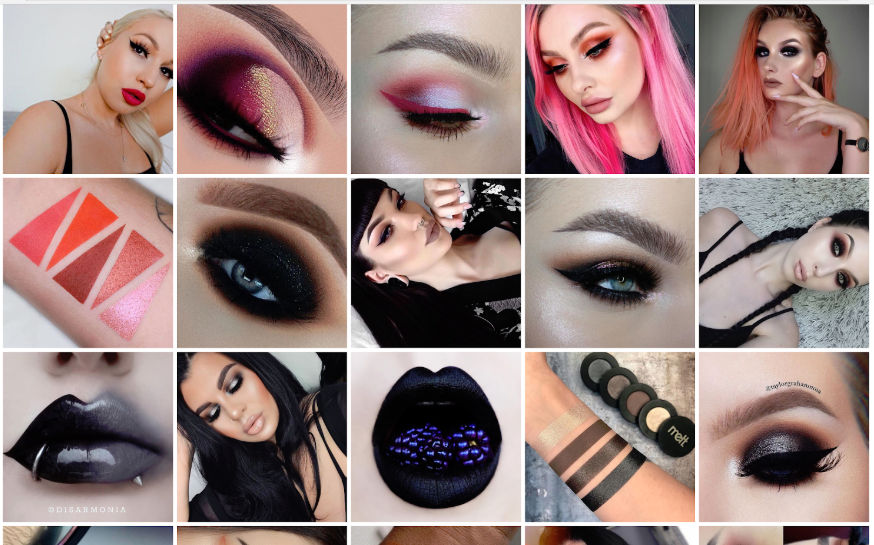
In the few moments that the site was revealed, someone managed to capture a screenshot and share it. The post was rapidly gaining traction. Our client’s mentions were rapidly adding up. Fast forward to a few hours later when the site was officially launched…
…every single product in the line was sold out in under 24 hours.
This article is a step-by-step roadmap to create the same principles of this success for your brand. Each step of this article will hopefully make you think and encourage you to re-evaluate your priorities and give you all the pieces of the puzzle you need to ensure success. This article is written to help you. And why am I sharing all this? Because I’m a nice guy. But more than that – because I can. Because I’ve done it. We’re going to get you there in 3 key steps:
Phase 1: Understand what the Unicorn Principle is…and what it isn’t.
Phase 2: Apply the Unicorn Principle to your brand. Step by step.
Phase 3: Turn your discovery into scalable revenue + brand growth.
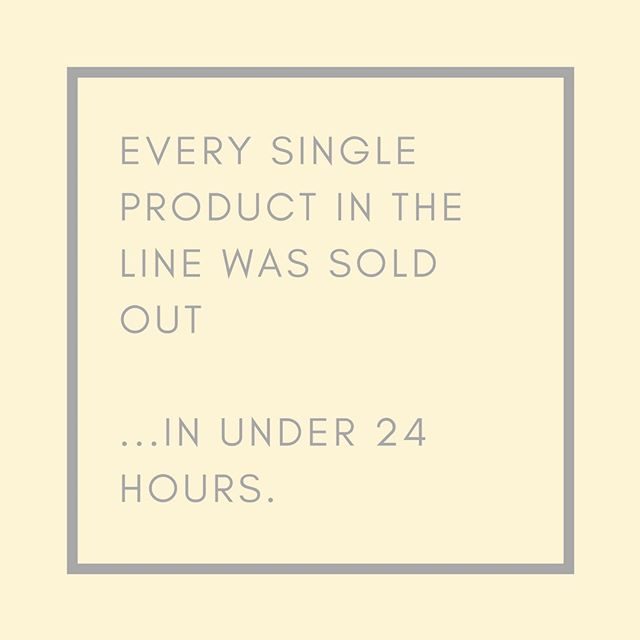
Branding: It’s Life or Death for eCommerce Brands
From music to movies to sports. In the realms of music, cuisine and couture. The ones who make money have a clear and powerful brand.
The same holds true for beauty, the winners take center stage because of their brand. The most obvious example of this are the phenomenal success of Fenty Beauty, and the ever-present Kardashian/Jenner empire. On the non-celebrity side, brands like Colourpop are dominating with a carefully crafted aesthetic and constant content marketing that captures the imagination of a dedicated base.
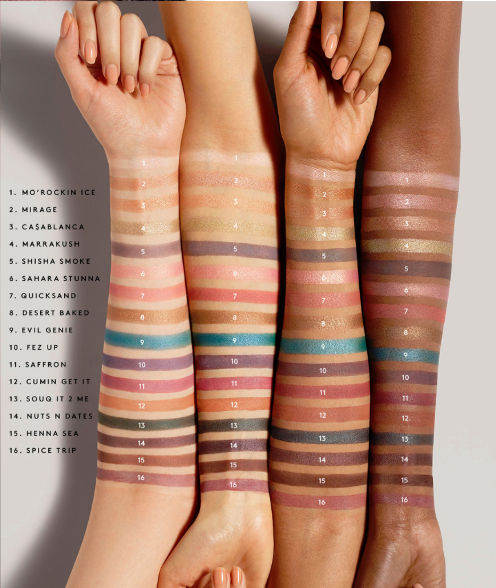
Most companies aren’t like that. If you’re reading this, *your* company may not be like that.
That’s nothing to be ashamed of. It’s how you know you have brand work to do.
With the right tools, your brand can change in the blink of an eye. You just need to figure out how the Unicorn Principle applies to your brand.
Hear me out for a minute. I’m going somewhere with this 🙂
The Unicorn Principle is what makes people pay attention. It’s why you instead of the other brand. It’s the core part of your “why” that resonates with your customers. It’s what helps media give a damn. It’s what helps you connect powerfully with influencers. It’s the reason you deserve attention. Marketers may call it your Unique Value Proposition, salespeople may call it your Unique Selling Advantage, and I call it the Unicorn Principle.
If you find what it is that makes people care about you/your brand/your products – your unicorn – and you use it the right way, then you will make a ton of sales.
Simple. That’s The Unicorn Principle.
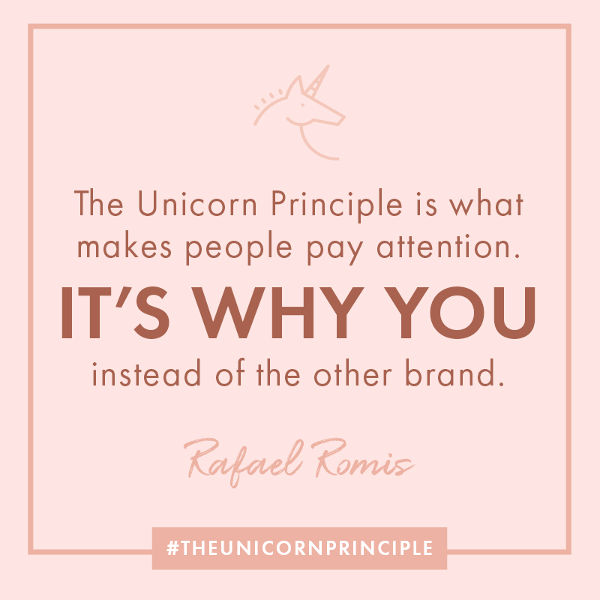
The industry isn’t as saturated as you might think it is…if you do it right.
In 2016, the U.S beauty market – the most valuable in the world – generated approximately $84 billion in revenue, and it’s showing no signs of slowing down.
If we take any successful beauty brand and look at their products, then there is a very high chance a dozen companies are selling something very similar. As for the small minority with a truly unique product, if they’re successful enough to be noticed, then just give it a couple of months and many copies will exist. 90% of startup companies fail within 2 years, and the biggest reason is failure to grasp or properly utilize their Unique Value Proposition (UVP).
But there’s no big fish little pond scenario here. We can all be big fish in the big pond. Are you with me? Ask yourself.
Can you identify how your brand uses your Unicorn Principle in under 30 seconds?
This should be super simple – why do people care? Why do they buy your products? But it’s not simple. Believe it or not, over 90% of brands out there don’t have a true answer. They sell a product because it’s a great product or because they love it, and all that is great, but unless if you get really lucky, then you won’t become a big brands just because of that. You see.. there is likely something very similar to whatever you’re selling either already on the shelves or in production. So, if your sales are just a result of a great product, then you’ll likely hit a wall in your growth, if you haven’t already. Hey – reading this will help you break the wall, so don’t fret.
So why do people buy? They buy because of how your product makes them feel.
The biggest mistake business owners make is thinking that people buy with logic. A better price.. or better quality. These are all great, but the fact of the matter is that you don’t want to compete on any specs (price/materials/etc) because then you’re opening yourself to competition. Instead, if you create an emotion — if you associate your brand/product with a feeling – then there will be no price or material that can compete with you. You’ll define those specs, and people will buy.
Sitenote: Competing on price isn’t always a bad strategy, but it’s rarely sustainable, and even then having a strong brand (even one based on value) is necessary to take things to the next level.
So let’s rethink that question – How will your brand use The Unicorn Principle?
If you don’t have an answer straight away, you need to think about this seriously. Take a step back, find some a quiet space, and get thinking with this list. Go on, I can wait.
Action Step: Take a deep dive with these questions. Get feedback on this from your founding team if possible, they may have answers that surprise you and are helpful.
- Does your brand stand for a cause or a movement that resonates?
- Is your brand inspired by or attached to a cultural figure or movement that resonates?
- Are you creating a platform for free expression for a subculture or group that is looking for opportunities to speak up?
- Is there a clear connection between a social, sports or cultural activity and your brand?
Simply put: If you’re not hitting yes with most of the above, you don’t have a strong UVP.
Vintage Case Study: Mac vs PC
A little kid talking to his grandfather while sitting on a piece of grass in the yard through their iPads. So sweet.
A young woman smiling, while designing something on her iPad. She’s so happy.
The delivery man uses his iPad to check off a stop on his route. So helpful.
Do you even care about the specifics of that electronic device? Hell no. It’s sweet, makes you happy, and it helps you get things done. Talk about emotion galore.
Now, think back to 10 years ago. Think about those old PC commercials. Like that first dual core processor (ding, ding, ding, ding!) – there’s no happy people using their PC’s, it’s all “this PC has the latest graphics, more RAM, and a brand new dual core processor”. In other words, those old PC commercials were extremely focused on the specs of the device they’re selling, which would makes sense since it’s a device that is meant to do something, so if I give you specs that are better than the competition, then you would buy from me. It does make sense… if you’re actually competing on specs. But Apple changed the game.
Because Apple is selling a feeling. Their products feel good — they’re trendy — and that’s something that’s hard to beat. Specs are secondary.

This is what finding your Unique Value Proposition and leveraging the Unicorn Principle for your brand is really about. The thing that will make people feel a certain way is the thing that makes your product unique above anyone else’s.
Apple’s customers don’t care if there are 15 phones that look exactly like an iPhone, or a handful that are faster. They’re not iPhones so they’re just not “it”.
If you can’t figure out what your UVP is – a true, stand out UVP – then your customers won’t care about you or what you’re trying to sell them. Is that too harsh? You’re doing it too, sometimes without even thinking about it… This goes back to the emotion versus logic idea. The vast majority of the time you buy something over something else because it makes you feel a certain way — better, safer, stronger, more confident — it’s always there, even for those small purchases that may seem insignificant.
Bottom line: Your most important job is choosing what your brand stands for, and then using that in a way that resonates with your audience, and in every possible contact with your customers. It should be evident in your branding, your website, your marketing, and even your conversations. You’re no longer selling widgets – you’re selling the emotion (it just happens to come through widgets).
Get brutally honest about the performance of your brand
Action Step: Take a ruthless inventory. Go into your website traffic stats, your invoicing software and your social media platforms. The first thing you want to do is look at how your company is comprehensively performing:
- What is the average number of sales you’re getting per month? How does it compare to your 2 most relevant competitors?
- Is that number growing over time?
- Are people proactively interacting with you on social media? (eg: Tagging you, posting about you/mentioning you)
- Do you have people direct messaging or calling asking for your product?
- Are people talking about the product on blogs, the radio or elsewhere?
If the answer is no to more than 2 of these, and you’re focused on a specific UVP across the board, then you’ve got to get brutally honest about it and understand that it’s just not the right UVP. Sorry. There is no point in sticking with what you think is unique about your brand, or what you think people will care about, if you can clearly see that people don’t care about it.
Here’s an important caveat. Make sure you’re seeing the full story in your metrics:

For example: If there is conversation but there are no sales, then that means that your UVP is probably not on the money. But if you’re seeing traffic on your website, and it doesn’t turn into conversions, then it might mean that you’re not using it properly on your website. It could also mean that your website is crap. But don’t assume anything – study your analytics and make decisions based on them.
Action Step: What may be going wrong with your UVP right now and what to do about it
The slump you’re seeing could mean anything, which is why it’s essential to look at the numbers and not make guesses. One of the worst things that can happen to your company is having someone (maybe you, or the founder, or a VP of marketing) making assumptions without basing them on actual metrics. It happens more than you would think.
Maybe you have an approach that works well, but it doesn’t really resonate with what you feel that the brand should be about, so you change it. Don’t do that. Always base your decisions on your metrics. You can make assumptions when you’re testing things based on your gut feeling or what you think your company should be doing. But once you have metrics, use your metrics. That’s what it’s all about.
How To Apply the Unicorn Principle. Step By Step.
Step A: Improve your existing UVP clarity if necessary. (Hint: It is most likely necessary)
If you need to get more clarity and come up with something stronger, the UVP can typically be found in one of 3 core areas, or a combination of these:
- Is it the story of the person that founded your company?
- Is it the mission of your company?
- Is it your product itself, does it have something that’s very unique, something that stands out?
Step B: Find the deeper story behind your brand
Unicorn Hunt #1: Your Company
Why did you start your company?
If you’re not the founder then maybe consider what attracted you to work for this company. What was it that really made your company so special to you that you chose to be associated with them?
Make something up! I don’t mean lie… that won’t get you far and your audience is too smart to fall for it. But figure something out, make it your own, and own it as if your life depends on it. Because your brand’s life does.
This sh*t is difficult. That’s why most people ignore it. But you’ll succeed Anyway! And when you do, the rewards will be phenomenal, crazy good.
Unicorn Hunt #2: Your Product
How is it different to the rest of the products on the market?
Different does not necessarily, by default, mean it’s your Unique Value Proposition, or the best way to apply The Unicorn Principle. It can be different in many ways that nobody cares about.
Let’s use another example – I am 6 foot 7, that’s not very common. Do you care about that?
Probably not. I could have been five feet tall, I could have been seven feet tall and nobody would really care.
There are things that matter and others that don’t.
You have to start by looking at what your audience cares about.
Sometimes you can flip that scenario on its head
What should your customer be caring about and how can your company or your product tap into that need? It’s not necessarily, by default, a Unique Value Proposition, but it could be.
For example, if you get a big influencer, let’s say Zoella, to start using your product then, by default people will start talking about your product because Zoella is using your product. If they’re using it, it must good and thus, they will use it as well. Now, that’s not a unique differentiator because you can’t really depend on influencers unless if you have something that influencers will care about themselves.

Major Key: Don’t ever build a brand based on the idea that you’re going to get influencers to care about it and thus sell product, almost never works out. But more on this later.
Unicorn Hunt #3: Your Customer Story
Do they care about this product? Ok good.
But do they REALLY care about it? You have to make sure, or you may find yourself focusing on something that makes little to no difference.
Let’s imagine for a minute that your product is all natural? It’s on the same shelf as 10 more all natural products, so that’s not good enough. If you’re not sure, then get sure!

You’ve got to open your eyes and ears and listen!
Action Steps:
- Read reviews and comments, see what hits home, what they talk about…and what they don’t talk about. That’s actually even more important. #
- Don’t focus on anything that’s not part of the conversation. Fun fact – most of the people that discuss brands online do not even follow the brands’ owned social media profiles so you need to get out there and find out what people are talking about.
Unicorn Hunt #4: Your competitors
Choose at least 3 of your closest competitors. Do they have “IT”? If they do, then that’s not the key to where YOU will best apply the Unicorn Principle. Think more deeply. The biggest successes in every industry focus on the brand. This has nothing to do with your logo, has nothing to do with your brand name (typically) It’s all about finding something that will resonate with your audience and using it in such a way that your audience cares or even understands that they need to care.
Sometimes it’s obvious, other times it’s not as obvious. Here’s a great example.
Jeffree Star Cosmetics. Jeffree Star is a celebrity with a huge following. His makeup line is great. In fact, I know his make up line is great because we launched their website, but do I know about the colors of Jeffree Star cosmetics?
I honestly don’t even remember.
What I do remember is that Jeffree Star took a series of photos where he used his own makeup line and the photos look spectacular.

Through those photos, I remember how Jeffree Star looked. If I was the audience for makeup that was looking for a bold look like Jeffree Star, then I have to go and buy Jeffree Star Cosmetics. That’s what it’s all about. That is what makes Jeffree Star Cosmetics unique and that’s what makes it stand out from everything else. It is that, “I want to feel like I am as bold as Jeffree Star”. To do that, I will buy their product.
I won’t go to another brand that might have similar colors because it’s simply not Jeffree Star.
Here, obviously the big kahuna – the way they apply the Unicorn Principle – is that the founder of the company is Jeffree Star.
Another example is Glossier. They created a line of very unique lipsticks but they didn’t stay there. They took it a step further and they built a whole brand around that type of makeup, the unicorn makeup. Now, every time you see glittery makeup, you’re thinking of Glossier. You’re thinking of them, and that’s what makes them strong. Because next time you want to get that look, you’re not going to start looking for random companies that have that look, you’re going to go straight to them because they are the ones that created that whole look.
Glossier fans call themselves “Glossier mavens” in 4 years they have amassed a huge cult following. 80% of Glossier’s growth and sales come from peer-to-peer recommendations or their own channels.
That is Glossier’s Unique Value Proposition. Their Unicorn Principle is applied to the way they brand their customer loyalty campaign.
Look at the company itself. What does it do? What products are selling? How are they selling? Who are their audience? How do they appeal to their audience?
Next look at your product. Consider its category, consider its features, consider how you make it, consider why you make it, consider everything you can about your product.
Once you have all that on a nice list of basically everything that’s interesting, everything that’s unique about your company, then you want to start thinking about that question again “Do my customers care about it?”
It’s a huge question and it’s one a lot of business owners get it wrong. Sometimes you’ll start by looking at something that’s very, very unique but does not translate into a feeling that will get you sales. If it doesn’t do that then nobody cares about your uniqueness.
Step C: Write out your Unique Value Proposition in a single document
Here’s how to create your step by step UVP writeup.
I’m going to level with you. You need to be excited right now.
If you’re not, go back to the steps above and find another UVP that excites you.
Why? You need to be excited because this brand UVP is what you’re going to eat, drink, and breathe. For a while at least. A lot of these examples I’m using have an enthusiastic, interesting founder behind the product, in some cases the founder’s story is the best way to apply the Unicorn Principle to a brand.
This step is about creating a single document you can share with your team and collaborators
Let’s set up 4 columns.

Column 1 – What makes your product unique, what could be your true UVP?
Remember that list you made? These are the potential Unicorn Principle activations you wrote down. Are you sure they’re the right ones? Great.
Column 2 – Give your potential UVP a number between 0 and 10.
Some of them are going to be an instant 10, some, not so much.
For example, if your founder is a psychology major who then started a beauty company, that’s a 10 because you either have it or you don’t.
However, if you say that your makeup is unique because the colors are unique, try to think about how unique your colors actually are.
Do they have glitter or are they just a darker shade of red? Because if they’re just a darker shade of red, I’ll give you a 5. Yes, it might be unique. Yes, it might be a little special, but it doesn’t necessarily stand out. It’s just slightly darker. That’s very, very important because if you don’t have a 10, forget it, it’s just not good enough.
10’s are your strongest opportunities to leverage The Unicorn Principle. Now, highlight, underscore, remember.
By doing this, you’re going to come up with a consolidated list of the only things that have potential to be your Unique Value Proposition. But we’re not done yet.
Column 3 – Your competition.
You can define competition in any way that you want to define competition. Be realistic about this.
If a company is targeting the same audience as you are and if they have a product that could replace your product then it’s competition whether you like it or not.
Whether a billion-dollar company, or a mom-and-pop shop, include them – they’re both your competition.
Think about the key players in your industry and consider how you would grade them on the items that you wrote. Again, you’re going to do a 0 to 10 and again, some of those will be an instant 0 or an instant 10.
The psychology major example your competition will likely get a 0.
If we go to unique features of a product and we talk about different shades of red, there are more unique companies than that, maybe some have extras such as glitter, so they would get a 10.
So cross reference, and if your grade is lower than the grade of your competition, that’s not your Unicorn Principle (UVP).
Now you’ve really consolidated the list down to a few select items that are really unique to you but do they really, really, really make your company stand out? Time to fill in the last and most important column.
Column 4 – How much do my customers care about this?
This is the most important item because if you have something that makes you super unique but doesn’t really resonate with your audience then doesn’t really matter if you have it or not.
What you’re looking for is the one item of your list where you scored 10, the competition scored zero and the audience wants it at least an 8 or more.
You have to be realistic and you have to be honest to the extent that you can be honest because some of them really do not know, right? But you want to make your best guess.
If you don’t have an item on that list that qualifies based on the criteria I just gave you, you do not have a Unique Value Proposition and you need to figure this shit out ASAP or otherwise, you’ll be in trouble.
I’ve been in the industry for over 10 years and frankly, I’ve seen the majority of companies fail. But let me tell you a secret here – the reason they fail, believe it or not, is almost never the product, the price or the features. It’s almost always the people behind the company and what they did to make it succeed. The successful companies, across every single industry on the planet have a brand. The brand is really all about the things that makes them unique.
Apple do it.
Nike (just) do it.
Southwest do it.
Every company has something that makes them unique and they build the whole brand around it. If you don’t, then you are just one of many. That doesn’t guarantee that you’re going to fail though.
What it does guarantee is that your ability to make it out and become successful will be down luck, or connections.
They’re not a UVP you have full control over and that’s not what you want is it?.
So, find your Unique Value that you control build around that to activate the Unicorn Principle. Here’s the coolest thing about it. Yes, it takes a lot of work. It takes a ton of work to find it. It takes a ton of work to use it right, but once you do, it’s almost like magic.
Phase 3: Turn your discovery into scalable revenue + brand growth.
I’m not done yet, there is one more step and yes, you’ve guessed it – it’s gonna take a lot of work.
You need to use your UVP.
You have to really use it everywhere you can because I, as your potential customer, need to be able to see it on every point that I connect with your company.

That means:
- I need to be able to see it on your website when I visit for the first time.
- I need to be able to see it when I visit for the fifth time.
- I need to be able to see it when I see an ad of yours on another website or if I read about your brand in the media or anywhere else.
- It needs to become synonymous with your brand.
- You’re no longer *insert your own company name here* you’re the brand with *insert your unique value as determined with the Unicorn Principle*.
This part needs to be all over your branding.
This is the part that defines your branding. It’s much better to start by thinking about what’s your Unique Value Proposition then it needs to start by thinking what is a cool name for my company. Nike could be called Bike, for all I care. It’s all about “Just Do It”. That’s what it is. Nike created a slogan and branded their whole company around that slogan. The name was just part of the process.
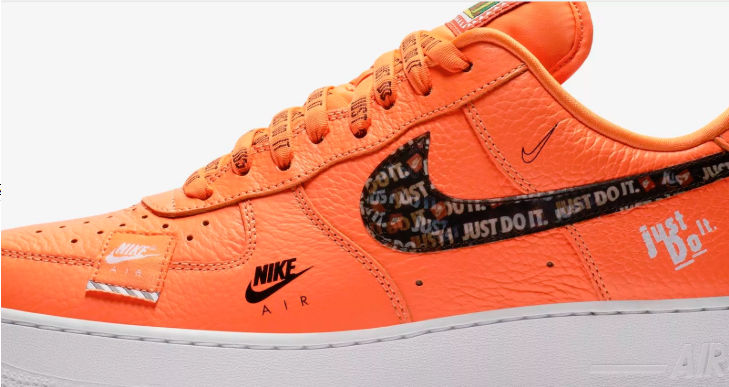
Establish your Unique Value Proposition and then come up with a brand that will work with it by using The Unicorn Principle.
If you have a name and you have color for your brand and you find that your Unique Value Proposition doesn’t match that, think about changing them.
So let’s assume that you found your Unique Value Proposition and now you’re ready to use it and grow. Where do you start?
-
Make a list. Check it twice. Pick 1 to start with.
- Think about where you are engaging and where you could be engaging with your audience. Consider where they hang out.
- Write down all the different ways that you could leverage the Unicorn Principle – your Unique Value Proposition – so that your audience can see it, and interact with it.
- Pick which ONE from this list you’re going to roll out first. You can go faster and do more and be more ambitious with implementation after you know what you’re doing. But it’s important to start with one. That means one method/campaign, and it means one platform too (whether that be Instagram, Facebook, Twitter, Google, etc).
A special note for brand new companies:
It’s important to say here, if you’re starting a new company, start with applying the Unicorn Principle, not with choosing a name or choosing colors for your brand. You don’t want to be a very minimal, uptight, high-end brand if you’re trying to appeal to a young trendy audience that doesn’t have a lot of money to afford that kind of look and feel.
Even if that’s what you like, that’s not necessarily what your audience likes. Oh yes, you heard me.
You need to think about what you are selling, who are you selling to. Of course, this is a process that you’ve already done to determine if you have a solid UVP. But you have to use this for your branding as well.
If you don’t do that, you’re done. It really is as simple as that.
Think about the last thing that you bought, what was it? Chances are that whatever you bought last was something that somehow drew your attention to it, even if it’s a pack of gum at the counter. Was it the packaging that you saw something that made you feel like this could be a good gum, or is it the gum you always choose because of that commercial?
Something made you choose that one gum instead of everything else that was in front of you at the time.
If your customer is not going to choose what you’re selling over everything else then you’re not going to last long. Even if you’re funded, or you have a lot of money, you’re not going to last. That’s just a fact of life.
Even once you have this, there’s still work to do.
-
Plan Your UVP Rollout
Everything that you think could help, write it all down. Once you do, you want to grade them from a number of 1 to 10, write down the effect that you believe each these items can create for your business.
Again, you want to include everything here, so social media, marketing campaigns, websites, billboards, offline, whatever you can think about of how you can use it, write it down.
Here’s a tip. Once you’ve done this, slow down. Don’t try and do everything at once because if you do, you’ll likely end up doing everything at 30% instead of a few things at a 100%.
Start with the most important.
Start with your website or your social media.
Start with your foundation, where everybody’s going.
You need to be where your customers will look for you. Your previous research and analytics will show you the right direction, and then you need to go all in – everything needs to really highlight the one thing that makes you unique.
-
Set your metrics for success
This is when you set the metrics for your success. You want to look at and measure everything. It starts with analytics. Hell it’s always about analytics. But you want to measure all your marketing campaigns, all your advertising spend, the interactions you see on your website.

Look at what’s happening right now and watch how that changes, the more you focus on applying the Unicorn Principle, your Unique Value Proposition the more changes you’ll see.
Again, the fact that you think that you found your Unique Value Proposition does not necessarily mean that that’s the one, nor does it mean that your customers are going to care as much as think they do.
Don’t stay laser-focused on that one thing for years to come, hoping that it will eventually work. No, it doesn’t work like that. Ain’t nobody got time for that.
Want to know what you do have time for? To track everything and you measure how your actions affect your numbers.
Whether that is in the form of analytics and traffic to your website or in the form of sales, or in the form of repeat customers, or in the form of cart value. You want to see the cart value going up, never going down. That’s what you do with your time.
-
Talk to your team and create an organized strategy
Make sure that everyone is on board.
That starts with the person at the very top, all the way to the person at the very bottom, because everybody can do their little piece to help with this process.
Ensure all the department heads have a good idea about what’s happening. Make sure that your creatives are on board with what you’re doing. They need to really understand and be on board with what you’re saying.
If you can’t sell your team on what your Unique Value Proposition is, you should not expect to sell your customers. That’s 101.
Even more important – make sure they are able to do what you’re asking of them. A common mistake that I see is companies hiring people because of their credentials when sometimes their credentials have absolutely no effect in the how and whether they’ll be able to perform on these tasks or not.
Case and point — the year after working with Disney, we worked with HBO and Lionsgate (among others). That makes sense – it’s the same industry and we had a big success with one of the leaders in it. But we also doubled our revenue because everyone – whether they made movies or sold jewelry – was WOWed by the fact that we worked with Disney.
In this case it actually made sense, because we have a team of people that has experience in several industries, but the fact of the mater is that working with a Fortune 500 company does not automatically mean that you can do everything. Making an awesome website for a studio movie does not mean that you can make an awesome eCommerce website — it doesn’t mean that you can make any eCommerce website. Graduating from Harvard, or having worked at Google doesn’t either. In fact, some of the best marketers I’ve ever seen have no formal education and they’re very much self-taught freelancers. So bottom line – make sure you’re working with the right people and don’t let yourself be WOWed by things that may not matter.
Here’s another example because this is important – we were working with a fashion company when they hired someone to run their social media. He was a very successful entrepreneur who had built an amazing personal brand and a large social media following. He’s been on every business magazine, so he really must know what he’s talking about. Well, he did. But his specialty was tech startups – not fashion.
When we engaged with the fashion company, we had that very conversation, and they ended up hiring a young girl instead, that was just five years out of college. Her whole life was on Instagram and Facebook and she had created a good following because she posted pictures about fashion, and what she found in H&M, Forever 21, and the likes. Adding this company to her repertoire just made perfect sense.
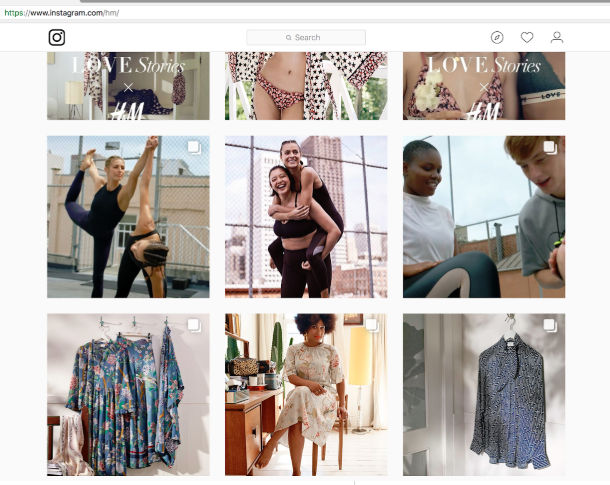
Surprise, surprise, they started seeing their social media grow. In fact, not only did their follower account grow by 60% within four months, their engagement also went from virtually zero to the point where they were running polls and getting hundreds of votes.
All because they hired someone that, in theory, was less experienced in the world of social media but in practice, was much more experienced in the world of social media that they need.
See what I did there? It’s another tip for you.
Don’t hire people just because they have a lot of years of experience, hire people because they know how to do what you’re asking them to do. If they don’t care about your industry, they’re not a good fit, as simple as that.
The same rule applies whether you’re just starting out or if you’re established.
-
Get actual feedback from real life human beings
Now, here some questions that you can ask. Start with yourself
Is my brand really unique?
Is it something that I would buy?
You can try to answer honestly for yourself (very hard), you can try to get into the shoes of your customers (much easier, and better), but you have to be honest about it. The fact that you worked 15 years to create a formula for your cream that is revolutionary because it’s using pineapple, does not mean that anyone should care about it. It means that YOU care about it because you spent a lot of time on building it. If it doesn’t resonate with people, then you have to think about what might. Give it a different twist. Use your story a little bit differently.
Tell people your story and what you did for 15 years. Where did you go? How do you find that pineapple could be the one?
If you’ve already done that and people are still not reacting to it, consider consulting with someone experienced to give you their take on it. If it’s not it, you need to find something else. And hey — you can find something else. Every time something fails, you want to make sure that you learn from it. If it didn’t work, then chances are that you didn’t “listen” or didn’t “pay enough attention” to the conversations of your audience. Next time you’ll do better.
This is something that your team can help you with. You want to create a team that has an open line of communication. I’ll sometimes recommend bringing in a third party to help, and making all feedback anonymous — people are more likely to open up, when they feel “safe”. Ask them to be brutally honest about how they feel about the brand or the products. See what they say.
Your team is the people on the inside, and chances are that they either have an opinion about it or their circle has an opinion about it. Don’t forget that every person that works in your team has a circle of people around them that knows that they work for your team. They will give them their opinion, whether they like it or not.
Think about it this way.
I have a friend that works at Google. I cannot get over the fact that Google does not have a support line for their Google App Business Customers. I mentioned it once, I mentioned it twice, I mention it every time I meet him.
Now, if Google went to my poor friend and said — “Hey, what do you think about our Google Apps For Business?” There’s a really good chance that he would say — “Well, it’s good, but you don’t have a support line”.
When you’re asking the people in your team, you’re not only going to get their opinions, but you’re also going to get opinions from their own circle of friends, family and colleagues. You have access to a lot of people.

If we say that each person has access to another hundred people that they interact with in a given year, and you have a team of 10 people, that really means that you have access to a thousand opinions. That’s the bare minimum. Within your team, you have a lot of leverage, you have a huge potential pool from which to gather honest feedback.
Top tip for employers. You don’t want to get opinions that are biased for whatever reason. It’s pretty difficult for them to tell you your product sucks. So you need to get creative. Give them multiple choice, rather than open ended answers because, sure, nobody’s going to tell you your product sucks. Give them a scale of 1 to 10, how they feel about the product. If you get a 5, on a 1 to 10 scale from an employee, your product probably sucks. And like I said before, consider hiring a third party to do this and do it anonymously. It helps.
-
Enlist opinions from Customers
Your customers will care because they have so many options.
Selling lipstick? There’s thousands of lipsticks.
Makeup? There are hundreds of thousands of brands. From super cheap to super expensive, small, big, natural, fake – they’re all out there.
Your customers care because they don’t know what to buy.
They’re looking for a reason to choose one over the other.
They’re looking for you.
What’s interesting is that you’ll often find that if a company has a larger market share than another company, and they both look like they have the same product, then one of two things has happened.
Either the first company has the bigger market share because they were there first… If you are the first to do something really special, then that becomes your brand.
Or they have applied The Unicorn Principle. Their Unique Value Proposition. Sometimes you won’t even see it, unless if you look for it — that’s the best kind.
It’s really a beautiful thing when a company makes it seem like it’s random, and yet, it’s very consistent. That’s what great branding is all about.
If you look for it then you will see it, because there’s no way (besides those few lucky exceptions that you don’t want to count on), no way whatsoever, that a brand can really get a lion’s share without standing out in the competition in one way or another. That’s a fact.
-
Engage with influencers
Now, you need to care about this big time because influencers will care about it. You know about influencers – these are the people that have an audience that will listen to every word they say. That makes them money, but it also comes with a responsibility. If an influencer starts giving their audience crap and starts posting ads about products that they don’t really care about, then they’re not going to last. Get into their mindsets. Better yet – understand their audience. Appeal to that audience.
How incredible would it be if you could get influencers promoting your product just because they love it? It’s exactly what their audience is looking for, and they want to give it to their audience because that’s what they’re all about. They gain a larger following and they’re able to make money out of it, but they have to give back to their audience by giving them great content.
A great product is great content.
It works both ways. I’m not necessarily talking about paid transactions. Sometimes, you’re going to get influencers paying attention to what you’re doing, because what you’re doing is cool. So, get into their mindset.
Of course you can pay for your promotion – you should – but even then there is a huge difference between an influencer using a product and making a cool video about how much they love it, versus making a video just showing the product to their customers because they’re getting paid. A good, established influencer will not just advertise a product for the money.
They really have no room to create content that’s irrelevant for their audience. So, now, if they take your money to market your product, then give them something that people care about, and you’ll hit a homerun.
Along the same lines, by having a clear grasp on how you will apply The Unicorn Principle, your Unique Value Proposition, you can attract media attention. That is the real golden ticket. If your product (or Unicorn) is something really worth noticing – if your product really attracts people’s attention – then they’re going to talk about it.
You’ll get feedback and reviews through articles and magazine or mentions in vlogs and blogs. And you will pick up your audience from there.
Remember that story at the beginning about the new product line selling out? That’s how we applied the Unicorn Principle in action — that’s what I do — and after working on hundreds of projects I’ve seen companies using the same principles make it big, and others that don’t to strike out. Don’t strike out. Download my worksheet and use it right now for your brand – Unicorn Principle Worksheet.
Listen to yourself, listen to your gut, and above all else, listen to your customers and your analytics. It’s all there, and you need to step in and take action.

